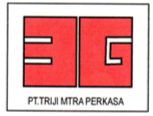Solution Manual Principles Of Corporate Finance 10th Edition 1661
After setting the stage, we will turn to the firm-specific issues that organizations face and the unique tools that corporate finance provides. And finally, we will take a look at what today’s corporates could do to address these issues and what investors could do to contribute to good corporate citizenship. If you want to get ready for the class, you can start reading chapter 3 of the book (if you have it). Its a long chapter, but it does cover the topics that we will focus on in the first semester.
This week we looked at what corporate finance is, what its limitations are and how they can be addressed. But that is just the beginning. We will dive into the topics that we will focus on in the first semester, using a firm-specific lens. We will examine the “idiosyncratic” challenges of each firm and the tools and constraints available to them to address them. Using a tool set that corporate finance provides, we will examine such topics as: competition, risk, product differentiation, innovative product development, product variety, financing, acquisitions and divestitures, risk management, managerial incentives and governance. We will look at how to estimate the benefits and costs of these tools and constraints and discuss the appropriate weights to assign to them. We will also look at how to make estimates and forecasts and how to evaluate the implications of these decisions on company value, as well as on other important topics. Finally, we will talk about how market participants can use corporate finance to address these topics and how to contribute to good corporate citizenship.
in the next few weeks, we will start to look at the mechanics of corporate finance and how the principles of corporate finance are implemented in practice. we will look at the relationship between a firm and its owners and managers. if the firm is privately held, what is the process for the ownership of the firm? who is the owner? does the owner have control? in a publicly traded firm, who is the owner? who owns what? if we can talk about owners and their relationship to the firm, then we can talk about the next key group, managers. what are managers? how do they relate to shareholders and debt holders? what is the relationship between the firm and its managers? how do managers behave? these are questions that we need to answer if we are going to understand how the firm works. why do we care about the capital structure? because it determines the amount of capital a firm can have. capital is a form of financial assets. if a firm can issue more debt than equity, then it can have more capital. the capital structure determines a firm’s financial strength. the capital structure also determines what liabilities it has. the liabilities of a firm are the promises it has made. when a firm defaults, it does so because it runs out of capital.
i would like to begin by restating the fundamental corporate finance law, which is that the company is a legal entity. as a legal entity, it has a few obligations that should not be ignored: it needs to pay dividends, it needs to pay taxes, it needs to honor contracts and it needs to act in a manner that is consistent with its long-term prospects. there are also a bunch of obligations that it does not have and it is important to understand what they are: its obligations to employees, suppliers and creditors. since the firm is a legal entity, the managers of the firm may have fiduciary duties to the owners of the firm, which are owed to the shareholders. while shareholders do not have the right to vote, they do have the right to receive dividends. of course, if the company is delisted from the exchange, that right is lost and the shareholders have no recourse. in addition, the managers have fiduciary duties to the creditors, who have the right to demand that the company pay its debts. finally, the managers owe a duty to the employees, who have the right to demand a fair day’s pay for a fair day’s work. as a result, we have a set of relationships that we need to think about: shareholders who are creditors, creditors who are equity holders, employees who are creditors and managers who have fiduciary duties to creditors, equity holders and employees.
5ec8ef588b
https://multipanelwallart.com/2022/11/21/solucionario-biologia-y-geologia-3-eso-santillanal/
https://www.waggners.com/wp-content/uploads/chayglor.pdf
https://www.illustratorsplatform.net/wp-content/uploads/2022/11/Utorrent_Non_Chi_Resta_Che_Piangere_Download.pdf
http://cefcredit.com/?p=60481
https://bazatlumaczy.pl/tech-com-usb-tv-tuner-ssd-tv-817-driver-free-download-_verified_/
https://ferramentariasc.com/2022/11/21/crysis-crack-64-bit-indir-best/
https://firstlady-realestate.com/2022/11/22/amibroker560crack-_verified_rar/
https://www.place-corner.com/man-leads-woman-follows-everyone-wins-free-pdf-download-install/
http://applebe.ru/2022/11/22/men-in-black-3-full-movie-hd-1080p-bluray-download-high-quality-free/
http://www.lagradinita.ro/?p=14399
https://mashxingon.com/quixel-ndo2-v1-1-8-x64bit-for-photoshop-__top__/
http://geniyarts.de/?p=90810
